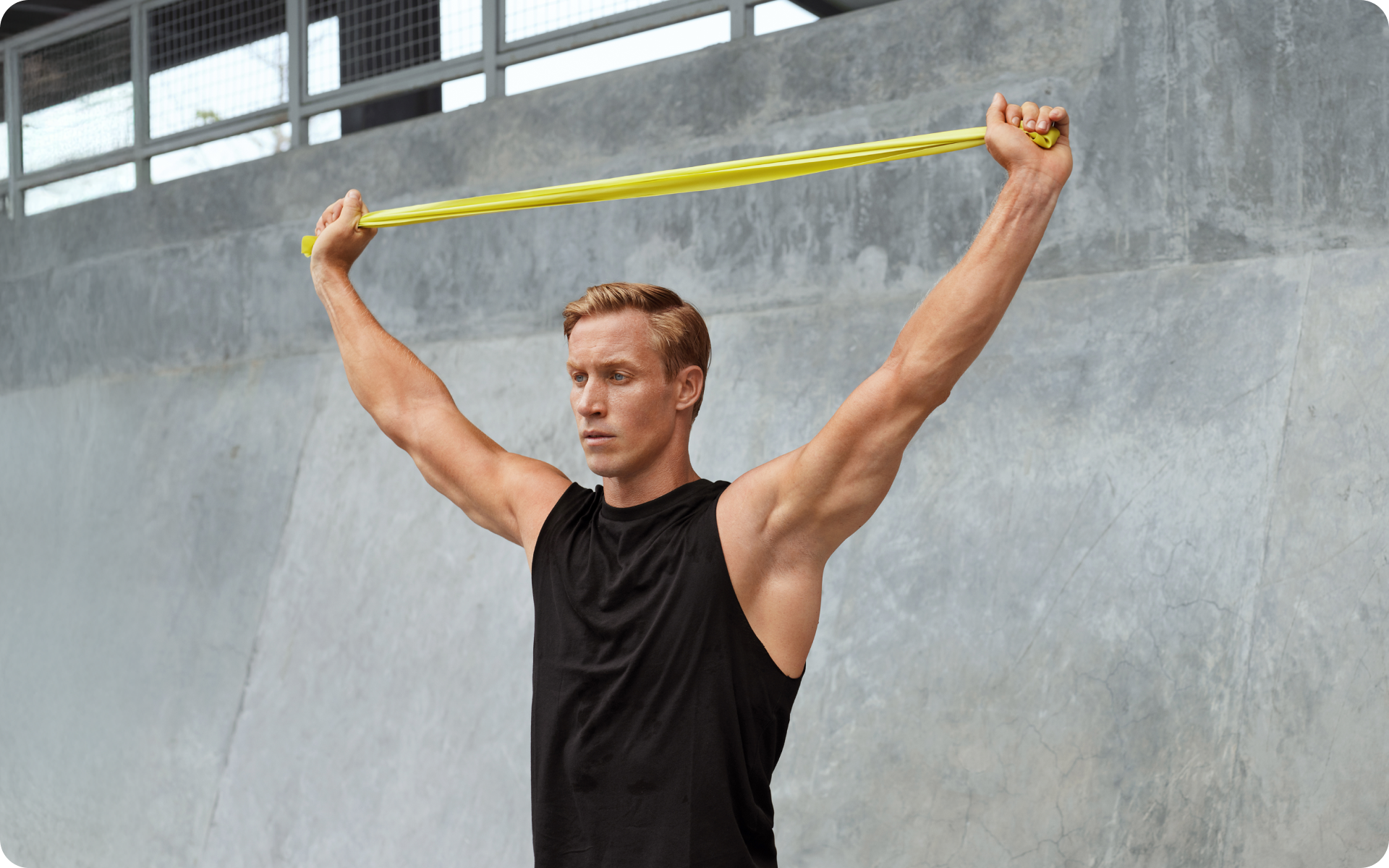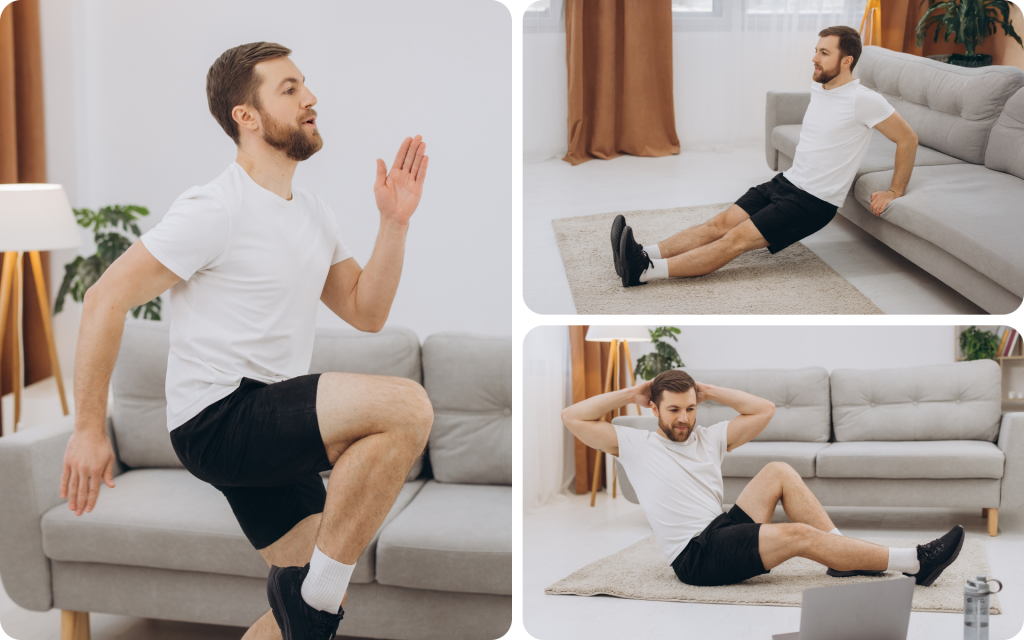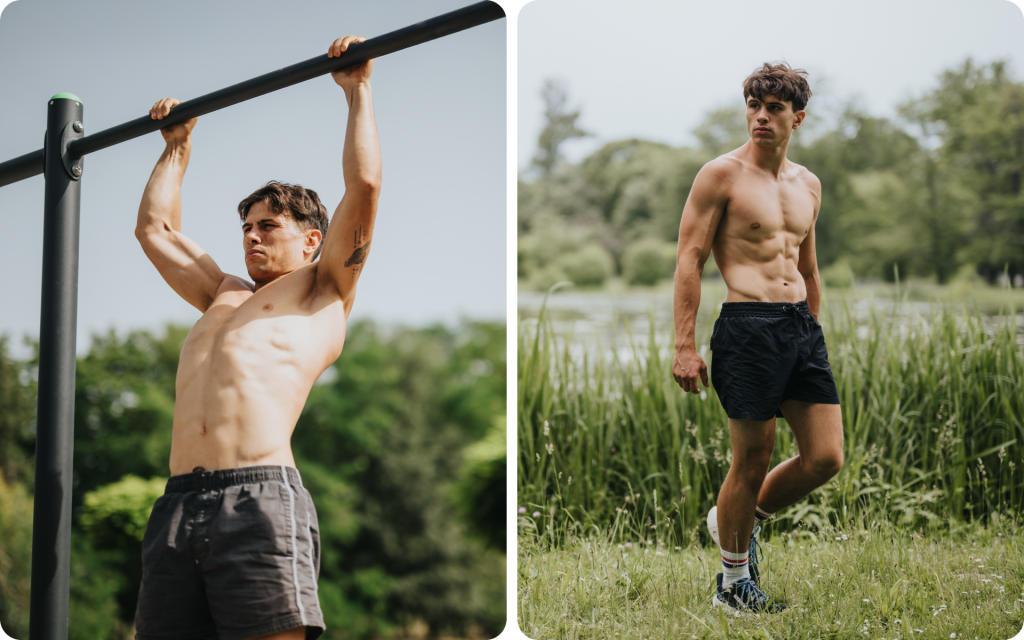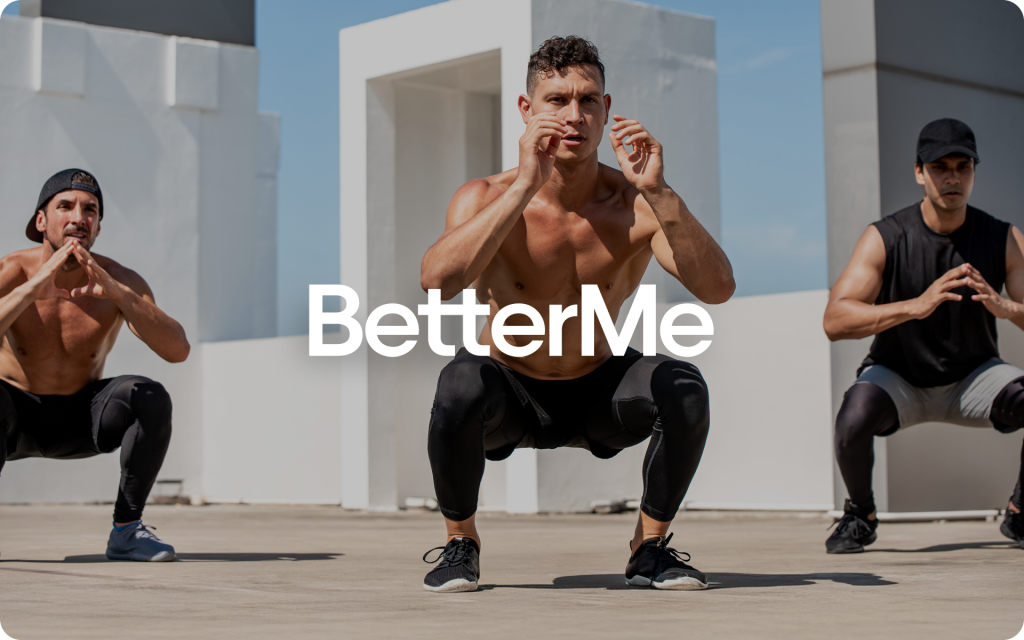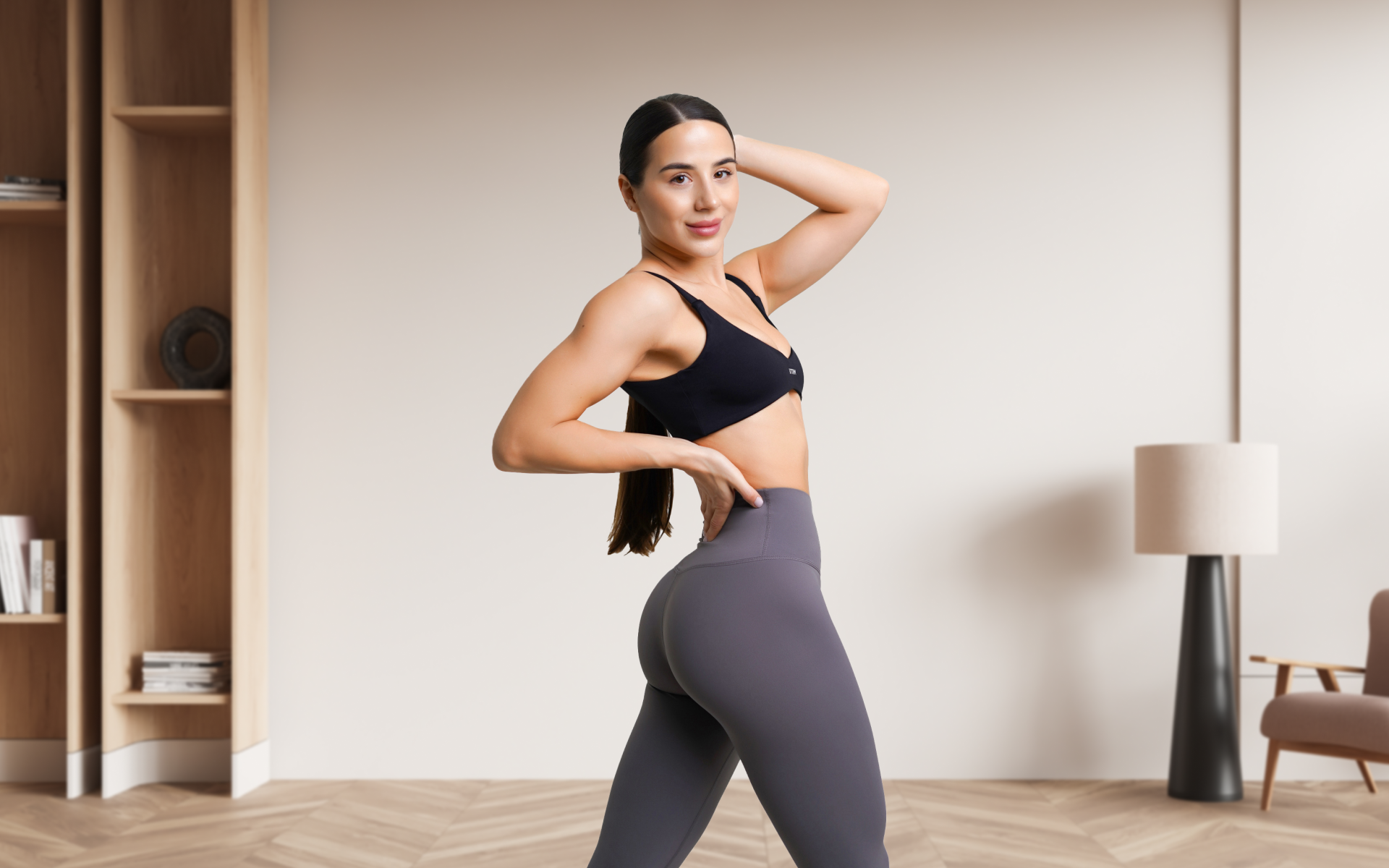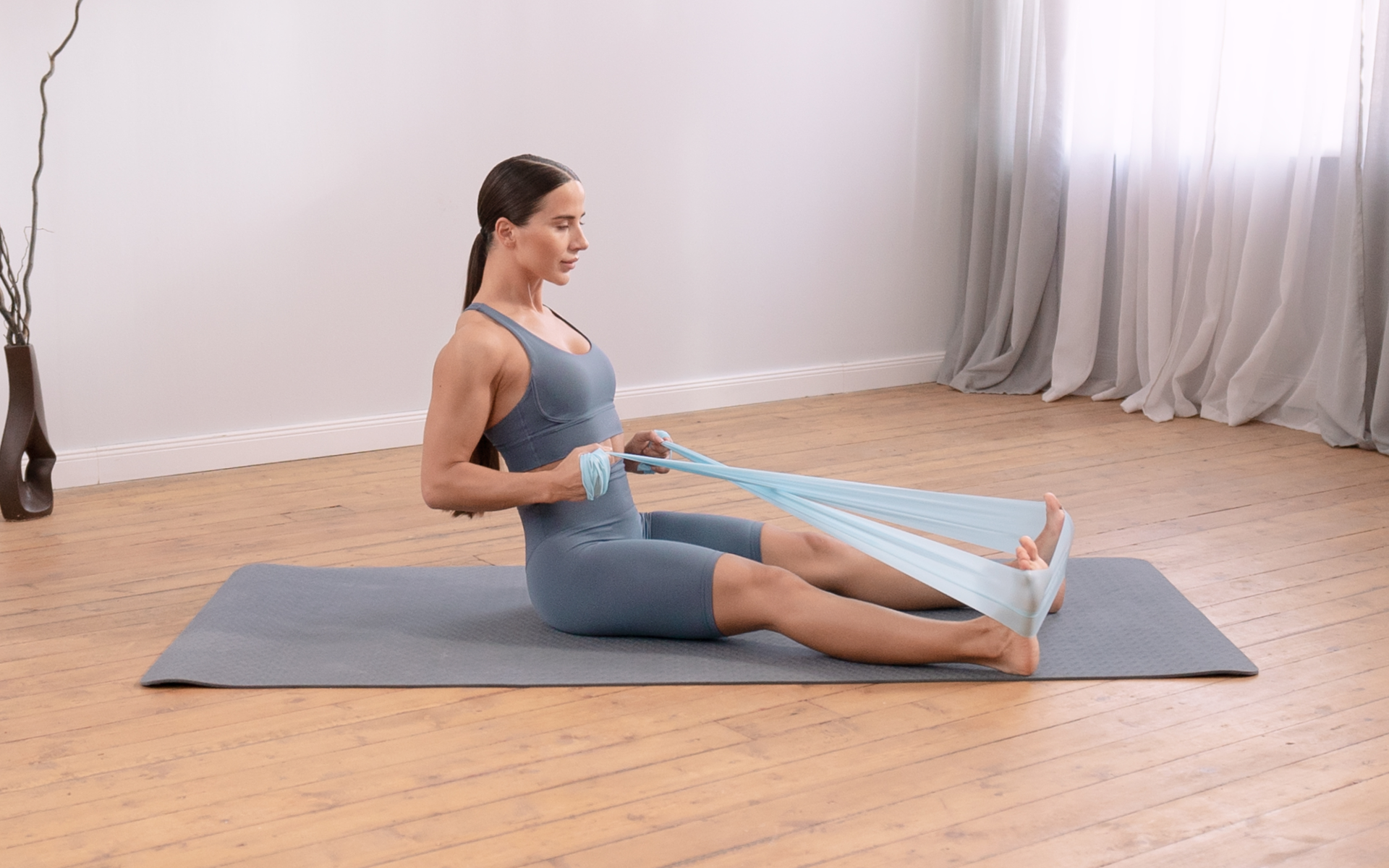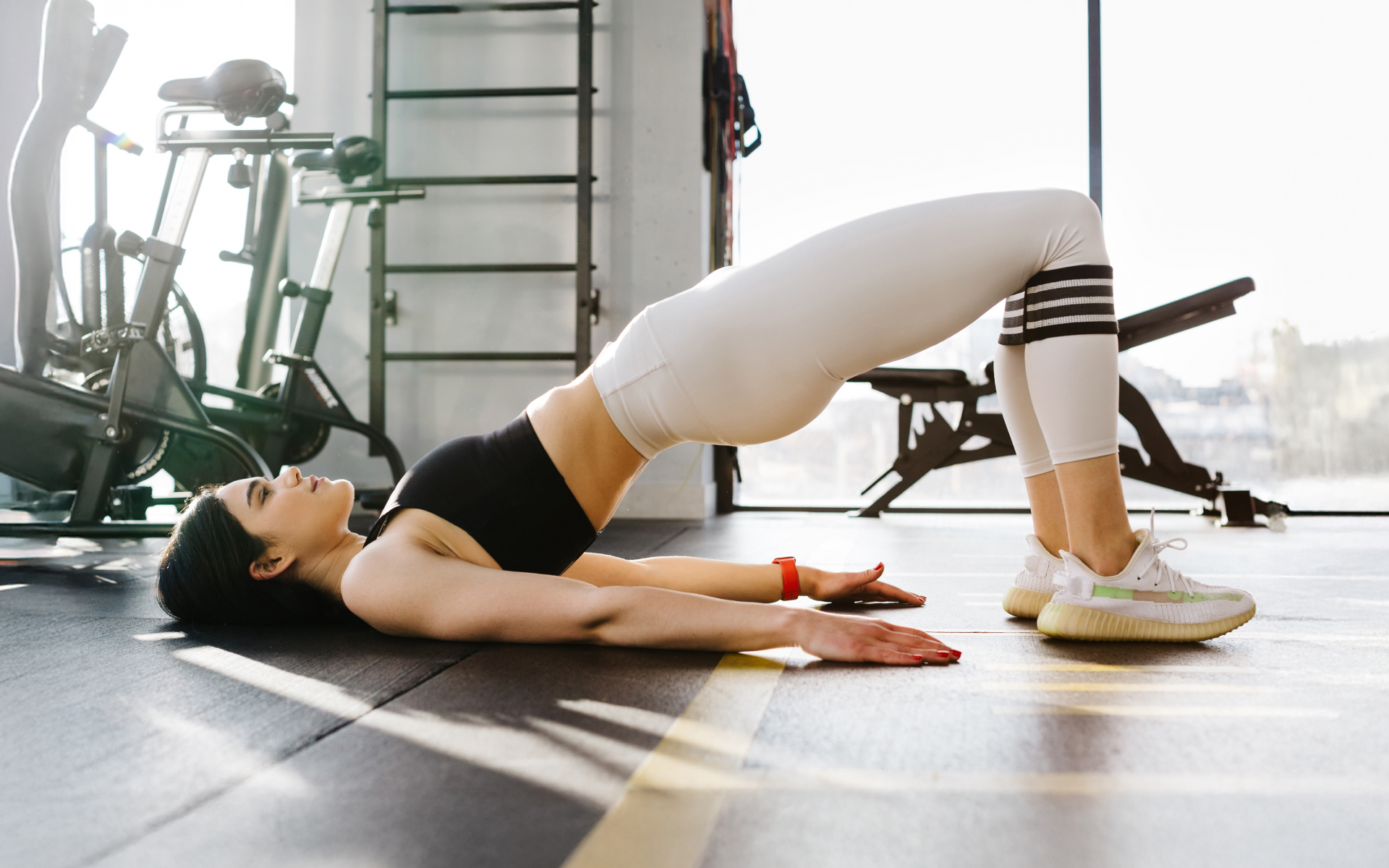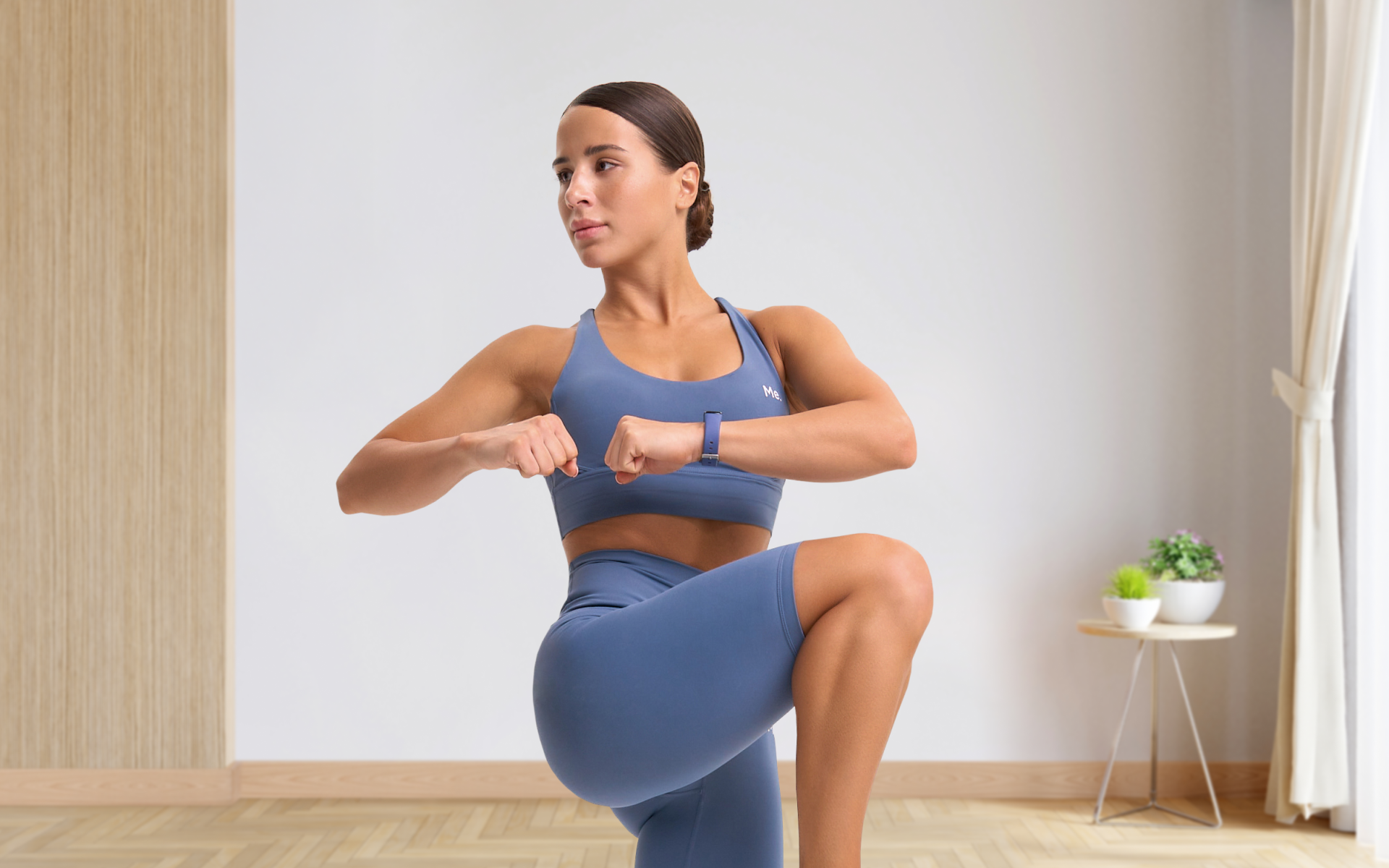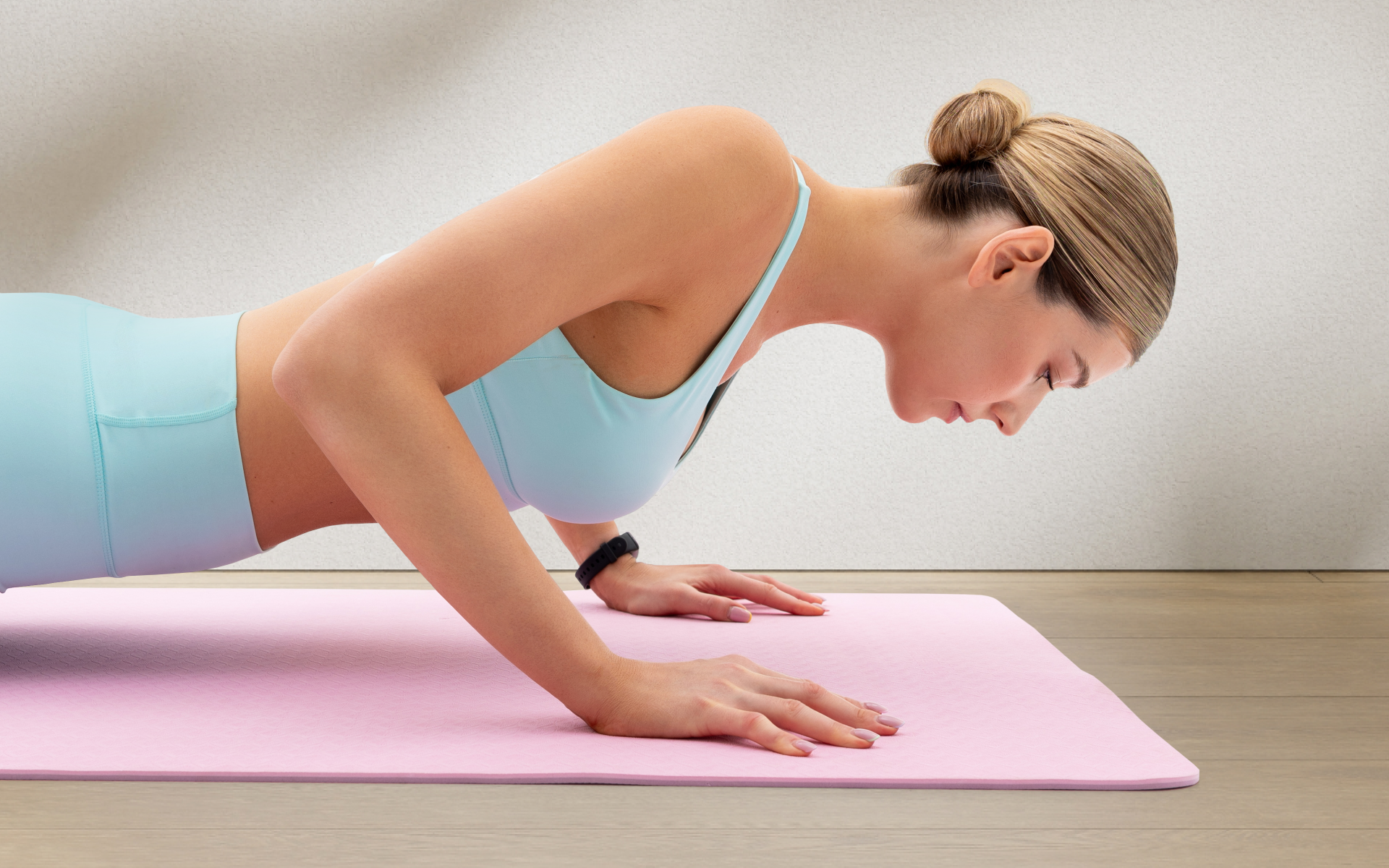Calisthenics has evolved from playground basics to a sophisticated training methodology that can reshape your physique, enhance your functional strength, and improve your overall health (1). However, misconceptions persist regarding its limitations and effectiveness. Can bodyweight training alone deliver the transformative results you’re seeking?
This comprehensive guide examines what happens when you commit to calisthenics as your primary training method. We’ll explore the physiological adaptations, timeline expectations, and practical implementation strategies backed by exercise science and real-world application of what a calisthenics-only transformation would look like.
What Happens if I Only Do Calisthenics?
It’s best to pair calisthenics with healthy lifestyle choices. What this means is you’re not just doing a few push-ups and pull-ups here and there, you’re also regularly engaging in other activities that support your overall health such as proper nutrition, adequate sleep, and stress management.
So what happens when you commit to calisthenics as your primary training method?
Muscle Hypertrophy and Strength Development
Your body responds to calisthenics through progressive overload, just like traditional weightlifting (2). The key difference lies in how you create that overload. Instead of adding external weight, you manipulate leverage, range of motion, and exercise complexity.
Research has shown that muscle protein synthesis responds favorably to resistance training when volume and intensity are appropriately managed (3). Your muscles don’t distinguish between a weighted squat and a pistol squat, they respond to tension, time under tension, and metabolic stress.
Neuromuscular Adaptations
Calisthenics training creates unique neuromuscular patterns that enhance coordination, balance, and proprioception (4, 5). Your nervous system becomes more efficient at recruiting muscle fibers in functional movement patterns, which leads to improved athletic performance across various activities (6).
The complex movement patterns inherent in advanced calisthenics exercises – such as muscle-ups, handstand push-ups, and human flags – demand exceptional neuromuscular control. This translates to better movement quality in daily activities and reduced injury risk.
Cardiovascular and Metabolic Benefits
High-intensity calisthenics training elevates heart rate and creates significant metabolic demand (7). Circuit-style workouts combining strength and conditioning elements can improve cardiovascular health while building muscle – a dual benefit that traditional strength training often lacks (8).
The metabolic flexibility developed through varied calisthenics training enhances your body’s ability to utilize both carbohydrates and fats efficiently during exercise and recovery periods.
Read more: Calisthenics Workout for Back: 8 Exercises for a Strong and Powerful Back
Can You Really Transform Your Body with Calisthenics?
Calisthenics has a lot of transformative power when it comes to building muscle, burning fat, and improving overall fitness. Over time, it can change your body in many ways, including:
- Grow Bigger Muscles
Calisthenics can stimulate significant muscle growth when programmed correctly. The principle of progressive overload applies through exercise progressions – advancing from basic push-ups to one-arm push-ups represents a substantial increase in relative load (1).
Upper body development tends to be particularly pronounced with calisthenics training. The compound nature of exercises such as pull-ups, dips, and handstand push-ups stimulates multiple muscle groups simultaneously, promoting functional strength and size gains.
- Improve Your Body Composition
Calisthenics training creates substantial energy expenditure. Combined with proper nutrition, this can lead to favorable body composition changes – increased lean muscle mass and reduced body fat percentage.
The high movement volume typical of calisthenics workouts supports metabolic health and can contribute to long-term weight management when integrated with appropriate dietary strategies (9).
BetterMe: Health Coaching app helps you achieve your body goals with ease and efficiency by helping to choose proper meal plans and effective workouts. Start using our app and you will see good results in a short time.
- Improve Your Functional Strength
Unlike isolation exercises that target individual muscles, calisthenics develops strength through integrated movement patterns (10). This functional strength translates directly to improved performance in sports, daily activities, and other physical pursuits.
The closed-chain nature of most calisthenics exercises – where your hands or feet remain in contact with a surface – promotes joint stability, coordination and balance that open-chain exercises may not fully address (11, 12).
What Physique Can You Get with Calisthenics?
Your physique is largely determined by genetics and lifestyle, and while calisthenics can tone your muscles and promote physical fitness, the extent of its impact on your physique may vary. That being said, here are some potential effects Calisthenics may have on your physique:
Lean Muscle Development
Calisthenics training typically promotes lean muscle development rather than maximal muscle size. The high-repetition, moderate-resistance nature of many bodyweight exercises favors type I muscle fibers and metabolic adaptations that support a lean, athletic appearance.
This doesn’t mean you can’t build substantial muscle mass – it means the quality of muscle development emphasizes functional strength, endurance, and definition over pure size. If you’re curious about lean calisthenics body, check out our earlier article
Proportional Development
The compound nature of calisthenics exercises promotes balanced muscle development across multiple joints and movement patterns. This can lead to more proportional physique development compared to bodybuilding approaches that may emphasize certain muscle groups.
However, achieving complete muscular balance requires careful exercise selection and progression. Some muscle groups may require specific attention through targeted movements or equipment additions.
Athletic Functionality
Calisthenics physiques typically demonstrate high levels of relative strength – the ability to move your body weight efficiently through space. This creates an athletic appearance that is characterized by muscle definition, functional movement capacity, and overall body control.
The emphasis on core stability, shoulder health, and movement quality inherent in calisthenics training contributes to an upright posture and confident physical presence.
What Is a Calisthenics-Only Transformation Workout Plan?
Beginner Phase (Weeks 1-8)
Day 1: Upper-Body Push
- Push-ups: 3 sets of 8-12 reps
- Pike push-ups: 3 sets of 5-8 reps
- Tricep dips (assisted): 3 sets of 6-10 reps
- Plank: 3 sets of 30-60 seconds
Day 2: Lower Body and Core
- Bodyweight squats: 3 sets of 12-15 reps
- Lunges: 3 sets of 8-10 per leg
- Glute bridges: 3 sets of 12-15 reps
- Dead bug: 3 sets of 8-10 per side
Day 3: Upper-Body Pull
- Pull-ups (assisted): 3 sets of 5-8 reps
- Inverted rows: 3 sets of 8-12 reps
- Face pulls (band): 3 sets of 12-15 reps
- Superman: 3 sets of 10-12 reps
Intermediate Phase (Weeks 9-24)
Day 1: Push Patterns
- Standard push-ups: 4 sets of 12-15 reps
- Pike push-ups: 4 sets of 8-10 reps
- Diamond push-ups: 3 sets of 6-8 reps
- Handstand wall hold: 3 sets of 30-45 seconds
Day 2: Pull Patterns
- Pull-ups: 4 sets of 6-10 reps
- Chin-ups: 3 sets of 5-8 reps
- Archer pull-ups: 3 sets of 4-6 per side
- L-sit progression: 3 sets of 15-30 seconds
Day 3: Lower-Body Power
- Jump squats: 4 sets of 8-10 reps
- Pistol squat progression: 3 sets of 3-5 per leg
- Single-leg glute bridges: 3 sets of 10-12 per leg
- Broad jumps: 3 sets of 5-8 reps
Advanced Phase (Weeks 25+)
Day 1: Advanced Push
- One-arm push-up progression: 4 sets of 2-5 per arm
- Handstand push-ups: 4 sets of 3-6 reps
- Planche progression: 3 sets of 10-20 seconds
- Muscle-up transition work: 3 sets of 3-5 reps
Day 2: Advanced Pull
- Weighted pull-ups: 4 sets of 5-8 reps
- One-arm pull-up progression: 3 sets of 2-4 per arm
- Front lever progression: 3 sets of 10-15 seconds
- Human flag progression: 3 sets of 5-10 seconds
Day 3: Integration and Flow
- Movement flow sequences: 4 sets of 60-90 seconds
- Combination exercises: 3 sets of 5-8 reps
- Isometric holds: 3 sets of 20-45 seconds
- Reactive movements: 3 sets of 30-60 seconds
It should be noted that the timeline of this workout is used loosely. The truth is that achieving some of these advanced calisthenics skills will take several months or even years of practice. It’s important to listen to your body and progress at a pace that works for you. Remember to always prioritize proper form and technique over speed or the number of reps.
Read more: Calisthenics for the Core: 6 Exercises to Try
How Long Does It Take to Transform a Body with Calisthenics?
As with most fitness journeys, the timeline for transforming your body with calisthenics will vary from person to person. While some may see results in a matter of weeks, others may take months or even years to achieve their desired physique and skills.
The speed at which you see progress largely depends on factors such as your starting point, consistency in training, nutrition, and overall lifestyle habits. It’s important to understand that calisthenics is not a quick fix, it requires dedication and patience to see long-lasting results. Dive deeper into the calisthenics workout results with our dedicated article.
The timeline for a calisthenics-only transformation may look something like this:
Initial Adaptations (Weeks 1-4)
Neurological adaptations occur rapidly during the first month of consistent training. You’ll notice improved coordination, movement quality, and exercise technique before significant physical changes become apparent.
Strength gains during this period primarily result from enhanced motor unit recruitment and improved intermuscular coordination rather than muscle hypertrophy.
Visible Changes (Weeks 4-12)
Physical transformations become noticeable between weeks 4 and 12 of consistent training. Muscle definition improves, body composition begins shifting, and functional strength increases significantly.
The rate of progress depends on training consistency, nutrition quality, recovery practices, and individual factors like genetics and training history.
The BetterMe: Health Coaching app will provide you with a host of fat-frying fitness routines that’ll scare the extra pounds away and turn your body into a masterpiece! Get your life moving in the right direction with BetterMe!
Substantial Transformation (Months 3-12)
Significant physique changes typically manifest between months 3-12 of dedicated calisthenics training. This timeline is aligned with the natural muscle protein synthesis cycle and adaptation timeline.
Advanced skills and movement patterns require 6-18 months of focused practice to develop proficiency, depending on the complexity of the movement and individual aptitude.
Long-term Mastery (Years 1-3)
Mastery of advanced calisthenics skills and optimal physique development requires 1-3 years of consistent, progressive training. This timeline allows for complete neuromuscular adaptation and the maximization of genetic potential within the constraints of bodyweight training.
The journey toward advanced skills such as one-arm pull-ups, planche push-ups, and human flags demands patience, consistency, and intelligent programming over extended periods. To learn more about 1 year calisthenics transformation, check out our in-depth article on the topic.
Are People Who Do Calisthenics Stronger than Bodybuilders?
Calisthenics athletes typically demonstrate superior relative strength – the ability to move their body weight efficiently through space. This advantage stems from the training specificity principle and the constant requirement to manipulate body weight during exercise.
Bodybuilders often possess greater absolute strength in specific movement patterns, particularly those trained with heavy external loads. However, this strength may not translate directly to bodyweight movement proficiency.
- Functional Strength Patterns
Calisthenics training develops strength through integrated movement patterns that mirror real-world activities. This functional strength translates well to athletic performance, daily activities, and injury prevention.
Bodybuilding training often emphasizes muscle isolation and hypertrophy (13), which may not directly translate to functional movement capacity despite impressive absolute strength numbers.
- Neuromuscular Control
The complex movement patterns inherent in advanced calisthenics require exceptional neuromuscular control and proprioceptive awareness. This creates a different type of strength – one that emphasizes coordination, balance, and movement quality.
Bodybuilders may lack this specific type of neuromuscular control despite possessing impressive muscle mass and strength in trained movement patterns.
- Context-Dependent Strength
Strength is context-dependent. This means that one can be strong in certain contexts and much weaker in others. For example, a person may have a high one-repetition maximum (1RM) for the bench press but struggle with performing an advanced calisthenics movement such as a muscle-up.
This is because strength is specific to the movements and muscles trained. In order to excel at advanced calisthenics, you must train specifically for those movements and increase your neuromuscular control and proprioceptive awareness in those specific patterns.
The lean, athletic appearance that is often associated with calisthenics is not solely a result of the training method but a combination of factors. Many calisthenics workouts involve high-rep, full-body movements (e.g. burpees, muscle-ups, handstand push-ups) that can burn a significant number of calories and improve cardiovascular fitness. This can contribute to fat loss, but again, it’s not unique to calisthenics – similar results can be achieved with other forms of high-intensity training. The workouts also entail functional, compound movements that build muscle endurance and strength. This can lead to well-defined muscles, particularly in the core, shoulders, and arms. However, muscle definition is only visible when body fat is low, which circles back to diet and overall energy balance. People who excel in calisthenics often have lean physiques because being lighter makes bodyweight exercises (such as pull-ups, planches, and levers) easier to perform. This creates a feedback loop: lean individuals are drawn to calisthenics, and calisthenics athletes tend to stay lean to perform better. It’s not that calisthenics causes leanness, but rather that leanness is advantageous for calisthenics. Your diet should be rich in lean proteins, complex carbohydrates, healthy fats, and plenty of vegetables and fruits. Protein supports muscle repair and growth, while carbs provide energy for workouts. Staying hydrated and ensuring adequate micronutrient intake also support overall performance and recovery (14). Both forms present unique challenges. Calisthenics requires mastering body control and relative strength, which makes certain moves (such as the planche or muscle-up) particularly challenging. Weight lifting allows precise load adjustments but may not train as much body coordination. Difficulty depends on your goals and current fitness level. Yes, calisthenics is effective for skinny individuals. It promotes muscle growth, strength, and body awareness using progressive overload with natural movements (1). With a structured routine and proper nutrition, skinny guys can build significant muscle mass and improve overall fitness.Frequently Asked Questions
Why do calisthenics bodies look better?
What should I eat during calisthenics?
Which is harder, calisthenics or weight lifting?
Is calisthenics good for skinny guys?
The Bottom Line
By focusing on compound movements, consistent progression, and a balanced lifestyle, you can develop impressive muscle definition and overall fitness using nothing but your own body weight. While genetics, nutrition, and daily habits play significant roles in your results, calisthenics offers a sustainable path to long-term health and physical capability. Use the calisthenics-only transformation guide we’ve shared here to start your journey.
DISCLAIMER:
This article is intended for general informational purposes only and does not serve to address individual circumstances. It is not a substitute for professional advice or help and should not be relied on for making any kind of decision-making. Any action taken as a direct or indirect result of the information in this article is entirely at your own risk and is your sole responsibility.
BetterMe, its content staff, and its medical advisors accept no responsibility for inaccuracies, errors, misstatements, inconsistencies, or omissions and specifically disclaim any liability, loss or risk, personal, professional or otherwise, which may be incurred as a consequence, directly or indirectly, of the use and/or application of any content.
You should always seek the advice of your physician or other qualified health provider with any questions you may have regarding a medical condition or your specific situation. Never disregard professional medical advice or delay seeking it because of BetterMe content. If you suspect or think you may have a medical emergency, call your doctor.
SOURCES:
- Bodyweight Training: A Return To Basics (2010, journals.lww.com)
- No Time to Lift? Designing Time-Efficient Training Programs for Strength and Hypertrophy: A Narrative Review (2021, ncbi.nlm.nih.gov)
- Making Sense of Muscle Protein Synthesis: A Focus on Muscle Growth During Resistance Training (2021, journals.humankinetics.com)
- Effects of Calisthenics and Pilates Exercises on Coordination and Proprioception in Adult Women: A Randomized Controlled Trial (2012, researchgate.net)
- The Effect of Breaking Up Sedentary Time with Calisthenics on Neuromuscular Function: A Preliminary Study (2022, pmc.ncbi.nlm.nih.gov)
- Effects of neuromuscular training on athletes physical fitness in sports: A systematic review (2022, frontiersin.org)
- Effectiveness of a 16-Week High-Intensity Cardioresistance Training Program in Adults (2017, pmc.ncbi.nlm.nih.gov)
- Physical Performance and Cardiovascular Responses to an Acute Bout of Heavy Resistance Circuit Training versus Traditional Strength Training (2008, journals.lww.com)
- The Effect of 12-Week Calisthenics Exercise on Physical Fitness among Obese Female Students (2022, researchgate.net)
- The effects of a calisthenics training intervention on posture, strength and body composition (2022, researchgate.net)
- Closed Chain Exercise (n.d., physio-pedia.com)
- The effects of open and closed kinetic chain exercises on the static and dynamic balance of the ankle joints in young healthy women (2017, ncbi.nlm.nih.gov)
- Training Programs Designed for Muscle Hypertrophy in Bodybuilders: A Narrative Review (2020, ncbi.nlm.nih.gov)
- 5 nutrition tips to maximize your workouts (2023, mayoclinichealthsystem.org)
